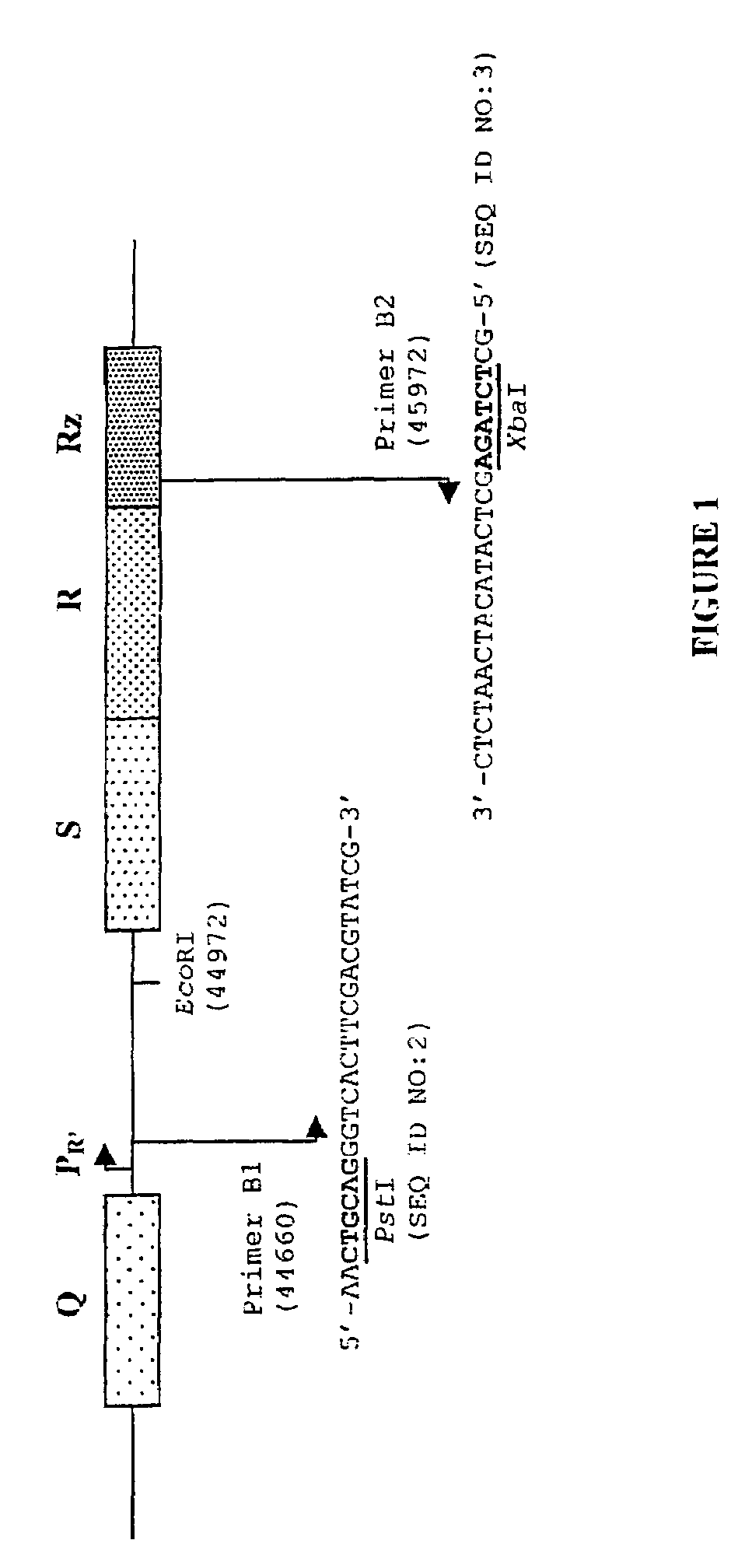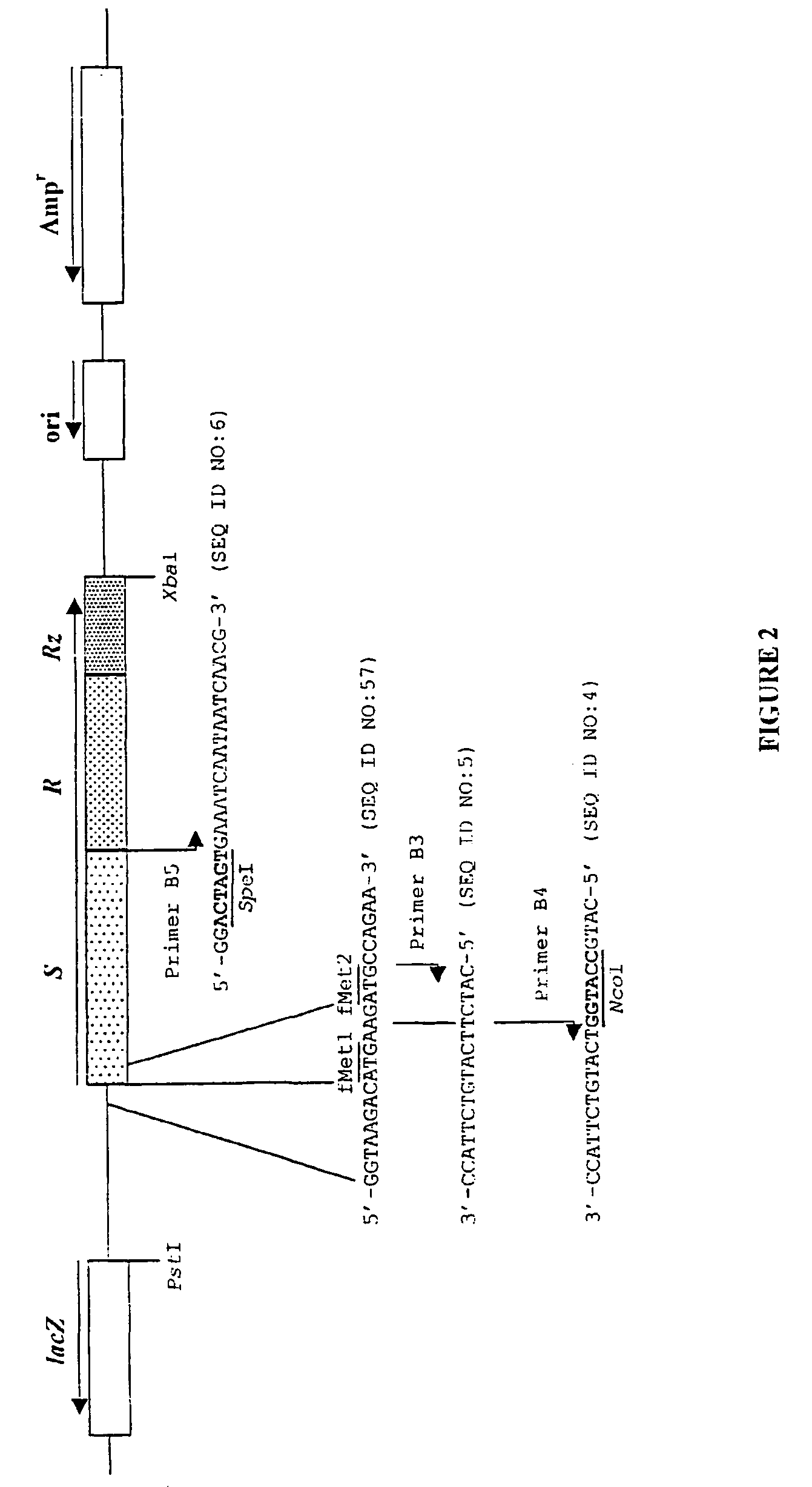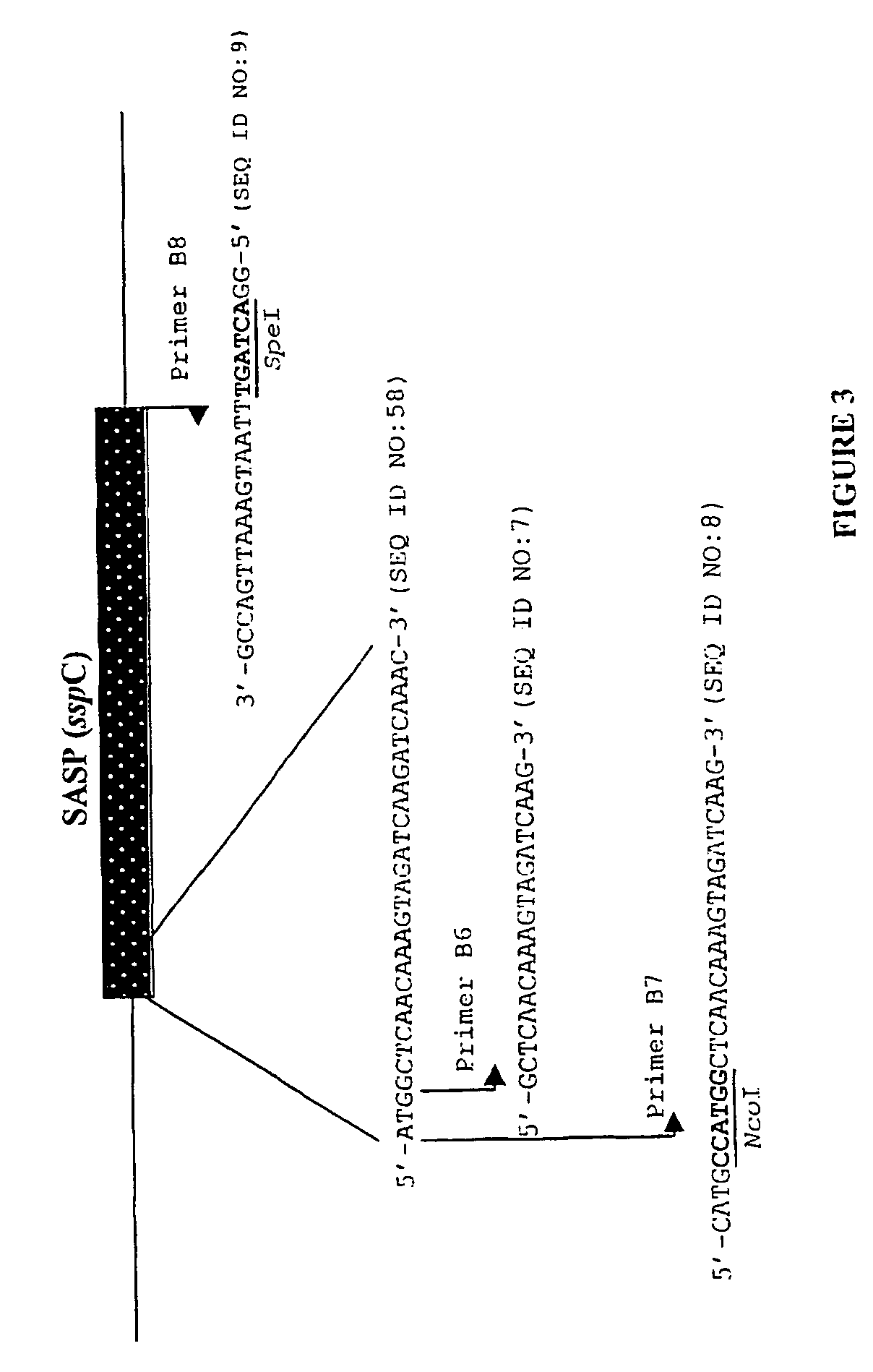Use of polynucleotides encoding small acid-soluble spore protein for inhibiting bacterial cell growth and/or treating bacterial infections
a technology of acid-soluble spores and polynucleotides, which is applied in the direction of depsipeptides, antibody medical ingredients, peptide/protein ingredients, etc., can solve the problems of disease cancer, varying levels of toxicity to human and other animal cells, and uncontrolled growth of microorganisms such as bacteria or fungi, etc., to reduce the cfu, broaden the host range, and extend the range of bacteria
- Summary
- Abstract
- Description
- Claims
- Application Information
AI Technical Summary
Benefits of technology
Problems solved by technology
Method used
Image
Examples
Embodiment Construction
OF EFFECT OF SASP
[0130]1. An example procedure for testing the in vitro efficacy of SASP, delivered by a bacteriophage carrying an sspC gene, to cause a reduction in viability of E. coli cells is as follows:[0131]i. The E. coli strain to be infected is grown overnight from frozen stock or fresh agar plate in λLB (LB containing 0.2% maltose and 10 mM MgSO4)[0132]ii. This overnight culture is used to inoculate 3 ml λLB (to an OD600 of 0.02) which is then grown at 37° C., shaking a 350 rpm until the OD600 reaches approximately 0.3. An aliquot of this culture (1 ml) is then use directly, or 100 μl is used to make serial dilutions in 0.9 ml λLB, as appropriate so that the ratio of phage numbers to cell numbers can be varied as required.[0133]iii. Aliquots (1 ml) of this cell culture are then transferred to a sterile Universal tube and phage lysate, or a dilution of phage lysate (made as described previously) (1 ml) is added. The cell / phage mix is incubated at 37° C., without shaking, for...
PUM
| Property | Measurement | Unit |
|---|---|---|
| molecular weights | aaaaa | aaaaa |
| molecular weights | aaaaa | aaaaa |
| molecular weight | aaaaa | aaaaa |
Abstract
Description
Claims
Application Information
 Login to View More
Login to View More - R&D
- Intellectual Property
- Life Sciences
- Materials
- Tech Scout
- Unparalleled Data Quality
- Higher Quality Content
- 60% Fewer Hallucinations
Browse by: Latest US Patents, China's latest patents, Technical Efficacy Thesaurus, Application Domain, Technology Topic, Popular Technical Reports.
© 2025 PatSnap. All rights reserved.Legal|Privacy policy|Modern Slavery Act Transparency Statement|Sitemap|About US| Contact US: help@patsnap.com



